This book brings back many personal memories of my travels in Poland:
When I visited Franciszek Starowieyski in 1983 (see my
first internet poster exhibition), I asked him
whom else I should see in Warsaw. He suggested , without hesitation, Waldemar Swierzy and Maciej Urbaniec,
and above all Jan Mlodozeniec, whom he seemed to admire most.
Having seen only a few reproductions of Mlodozeniec's work at that time, and most of them in black
and white only, I was rather surprised. How could this virtuoso of 16th century drawing, with an aristocratic
taste for the absurd, have such a high opinion of Mlodozeniec's rather simple forms and straightforward messages?
"Nobody else has such
an understanding of color as Jan Mlodozeniec, he is in the same class as Henri Matisse", Starowieyski explained and
arranged a meeting, not without warning me that Jan was very poor, since he put all his energy into posters,
and did not care to waste his time with the many lesser things that artists do to keep alive.
The Mlodozeniec family and his son Piotr gave me a warm welcome, and many posters, but the master
himself was away in Zakopane. He loves the mountains, they said. Nevertheless, the visit and it's preceding one-minute
art history lesson was a real eye-opener. Zdzislaw Schubert's introductory sentences
in the present book exactly mirror the cherished memories I keep of it:
A flat on the ground floor in a small apartment house from the thirties in the Mokotow district in
Warsaw, just beside the busy Pulawska street. Green trees all around, seldom any cars. One room furnished
with a functional simplicity and without an ostentatious attachment of importance to arrangements was taken up
for the atelier of Jan Mlodozeniec, the author of excellent posters, graphic designs of publishing
projects and a countless number of drawings. You could say it was the atelier of an applied art designer,
as the profession used to be called before, or graphic designer to use more contemporary terminology, were
it not for the fact that the oeuvre of this artist exceeds the boundaries of meanings traditionally
attributed to these terms. On one hand, the artist put far more into his posters and illustrations than
required by their strictly utilitarian character. On the other hand, and especially in the past decade,
most of the works were created not on commission, but out of a deep inner need, revealing to the public
Mlodozeniec the painter par excellence (intimates knew it all along) ...
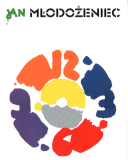
 Jan Mlodozeniec 1989
Jan Mlodozeniec 1989
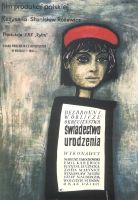 1961, Birth certificate,
1961, Birth certificate,
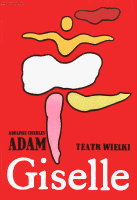 1968, Giselle,
1968, Giselle,
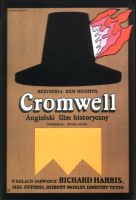 1971, Cromwell,
1971, Cromwell,
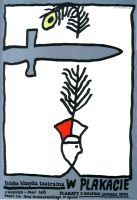 1983, Classic polish theater in posters,
1983, Classic polish theater in posters,
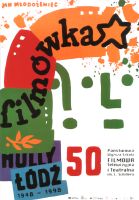 1998, 50th anniversary of the Lodz drama school
1998, 50th anniversary of the Lodz drama school
 Andrzej Stroka
Andrzej Stroka
 Zdzislaw Schubert
Zdzislaw Schubert